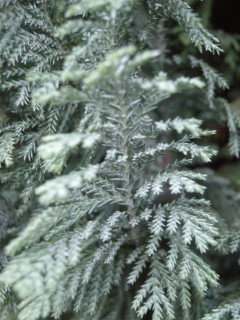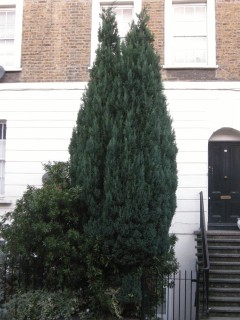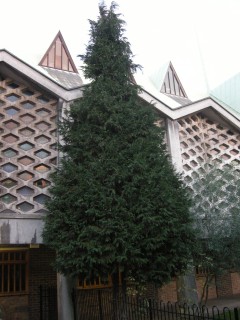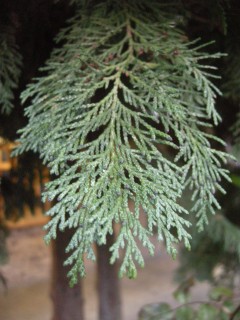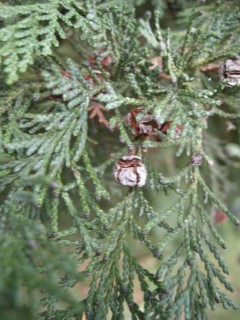Position: Full sun to partial shade
Flowering period: N/A
Soil: Well drained, moist
Eventual Height: 8m
Eventual Spread: 2.5m
Hardiness: 5a, 5b, 6a, 6b, 7a, 7b, 8a, 8b, 9a, 9b
Family: Cupressaceae
Chamaecyparis lawsoniana ‘Ellwoodii’ is a slow growing, evergreen, columnar shrub/ tree. The blue/ green leaves are needle like, opposite, with a scaly texture, up to 5mm in length and are produced on flattened shoots. The branches of the plant are upright and erect. The bark of the plant is red/ brown. The seed cones are globose, 7-14 mm in diameter, with 6 to 10 scales, initially green becoming brown with age.
Chamaecyparis lawsoniana ‘Ellwoodii’ is commonly known as Lawson Cypress ‘Ellwoodii’. The species, Chamaecyparis lawsoniana, is native to western United States and was introduced into the UK by collectors working for the Lawson and Son nursery of Edinburgh in 1854. Chamaecyparis lawsoniana ‘Ellwoodii’ was discovered as a naturally occurring seedling in Swanmore Park, in Bishop’s Waltham, UK and was first described in 1929.
The etymological root of the binomial name Chamaecyparis is derived from the Greek chamea ’dwarf’ and kupeiros the ancient Greek name for the Cypress (ironically this is not a dwarf tree). Lawsoniana is named after the Scottish nursery that discovered tree and brought it to the UK. Ellwoodii is derived from the gardener at Swanmore Park, Elwood.
The landscape architect may find useful Chamaecyparis lawsoniana ‘Ellwoodii’ useful as an evergreen hedge or screening plant, particularly in shady locations. It may also be of use as a vertical accent plant.
Ecologically Chamaecyparis lawsoniana ‘Ellwoodii’ is of little value to wildlife.
The Royal Horticultural Society has given Chamaecyparis lawsoniana ‘Ellwoodii’ their prestigious Award of Garden Merit in 1993.
Chamaecyparis lawsoniana ‘Ellwoodii’ prefers moist, well-drained soils. It will tolerate most pH of soil although it prefers slightly acid soils.
Chamaecyparis lawsoniana ‘Ellwoodii’ requires little maintenance. If being maintained as a hedge it should be trimmed twice a year.
